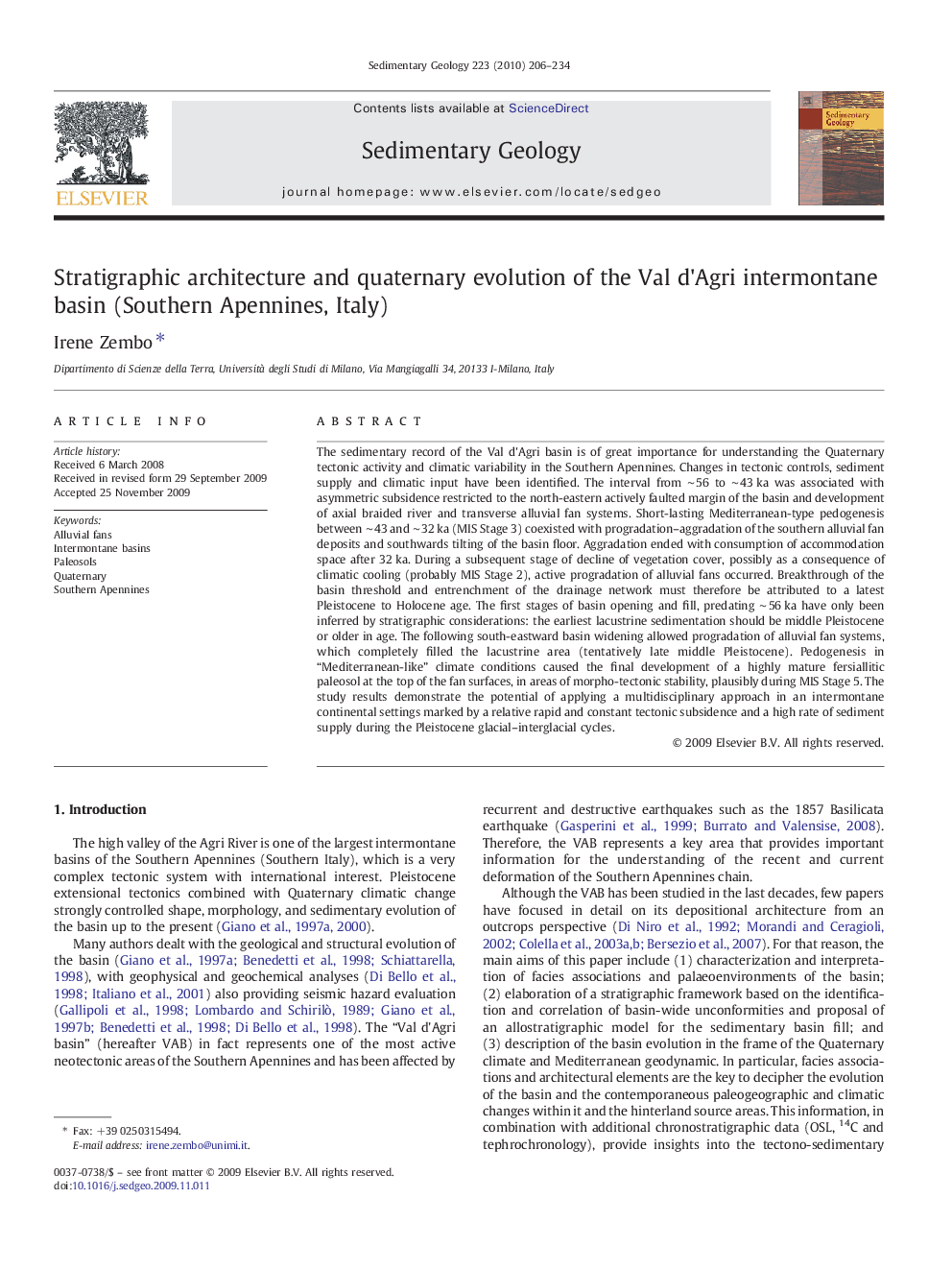| کد مقاله | کد نشریه | سال انتشار | مقاله انگلیسی | نسخه تمام متن |
|---|---|---|---|---|
| 4690324 | 1636130 | 2010 | 29 صفحه PDF | دانلود رایگان |

The sedimentary record of the Val d'Agri basin is of great importance for understanding the Quaternary tectonic activity and climatic variability in the Southern Apennines. Changes in tectonic controls, sediment supply and climatic input have been identified. The interval from ∼ 56 to ∼ 43 ka was associated with asymmetric subsidence restricted to the north-eastern actively faulted margin of the basin and development of axial braided river and transverse alluvial fan systems. Short-lasting Mediterranean-type pedogenesis between ∼ 43 and ∼ 32 ka (MIS Stage 3) coexisted with progradation–aggradation of the southern alluvial fan deposits and southwards tilting of the basin floor. Aggradation ended with consumption of accommodation space after 32 ka. During a subsequent stage of decline of vegetation cover, possibly as a consequence of climatic cooling (probably MIS Stage 2), active progradation of alluvial fans occurred. Breakthrough of the basin threshold and entrenchment of the drainage network must therefore be attributed to a latest Pleistocene to Holocene age. The first stages of basin opening and fill, predating ∼ 56 ka have only been inferred by stratigraphic considerations: the earliest lacustrine sedimentation should be middle Pleistocene or older in age. The following south-eastward basin widening allowed progradation of alluvial fan systems, which completely filled the lacustrine area (tentatively late middle Pleistocene). Pedogenesis in “Mediterranean-like” climate conditions caused the final development of a highly mature fersiallitic paleosol at the top of the fan surfaces, in areas of morpho-tectonic stability, plausibly during MIS Stage 5. The study results demonstrate the potential of applying a multidisciplinary approach in an intermontane continental settings marked by a relative rapid and constant tectonic subsidence and a high rate of sediment supply during the Pleistocene glacial–interglacial cycles.
Journal: Sedimentary Geology - Volume 223, Issues 3–4, 15 January 2010, Pages 206–234